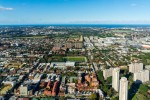Unlocking the Potential: Key Rental Property Statistics in the Philippines 2025
The rental property market in the Philippines is evolving faster than ever. With growing demand from young professionals, digital nomads, and families seeking flexible living arrangements, rental trends reveal how Filipinos are adapting to economic shifts and lifestyle changes.
For property owners, landlords, and real estate managers, staying updated on the latest rental statistics isn’t just insightful — it’s essential. Knowing where the market is heading helps you make smarter investment decisions, adjust pricing strategies, and ensure your property remains competitive.
At RentPH, we’re passionate about helping both renters and landlords navigate this dynamic market. Let’s take a deep dive into the most important rental property statistics in the Philippines — and what they mean for your next move.
1. The Growing Popularity of Renting Among Filipinos
According to 2025 trends, more than 40% of Filipinos in urban areas now prefer renting over buying. This shift is driven by several factors:
-
Affordability: Property prices in cities like Metro Manila, Cebu, and Davao continue to rise, making homeownership challenging for young professionals.
-
Flexibility: Renting allows individuals and families to relocate easily for work or lifestyle reasons.
-
Urban convenience: Many renters prioritize proximity to offices, schools, and amenities over ownership.
Fun fact: In Metro Manila alone, rental demand increased by 18% from 2023 to 2025, according to RentPH’s internal data and listings analysis. This means more Filipinos are actively searching for mid-range to budget-friendly rentals across major cities.
2. Average Rental Prices Across Key Cities
Let’s take a snapshot of the average monthly rental rates (as of 2025):
While Metro Manila remains the most expensive area for renters, cities like Iloilo, Cagayan de Oro, and Bacolod are emerging as affordable yet vibrant alternatives.
RentPH’s nationwide listings reveal that mid-range rental homes are the most in-demand segment. These are properties that strike a balance between price and comfort — often rented by starting families and professionals.
3. What Renters Are Looking for in 2025
The pandemic reshaped what Filipinos value in a home, and those preferences are sticking around. Based on RentPH’s user behavior and survey data:
-
68% of renters now prefer homes with dedicated work-from-home spaces.
-
56% prioritize proximity to transportation hubs and convenience stores.
-
47% are willing to pay extra for pet-friendly properties.
-
34% prefer units with smart features like keyless entry or energy-efficient appliances.
These trends show that Filipino renters are becoming more discerning. Comfort, functionality, and location are now top priorities — and landlords who align with these preferences are seeing higher occupancy rates.
4. Rental Occupancy and Turnover Trends
Despite economic challenges, occupancy rates for mid- to low-range rentals remain strong, averaging around 85–90% nationwide. This indicates steady demand, especially for well-maintained homes in accessible areas.
However, turnover rates (how often tenants move out) are higher in city centers, reaching up to 25% per year. This reflects both job mobility and renters’ desire for better deals or amenities.
To minimize vacancies, RentPH advises landlords to:
✅ Maintain transparent communication with tenants.
✅ Offer flexible payment options.
✅ Keep properties in good condition to justify rental value.
5. Digital Renting: The Rise of Online Listings
In 2025, over 80% of renters in the Philippines search for homes online before contacting an agent or landlord. This shift means landlords and property managers must establish a strong online presence to stay competitive.
RentPH’s digital platform plays a key role here — connecting property owners with verified tenants through secure, easy-to-navigate listings. It’s now standard practice to use high-quality photos, virtual tours, and clear rental terms to attract serious inquiries.
This digital movement also enhances trust and transparency between tenants and landlords, reducing the risk of scams or miscommunication.
6. Property Investment Outlook for 2025
Rental properties continue to be a reliable investment for Filipinos. According to the Philippine Statistics Authority and local real estate experts:
-
Rental yield (annual rent income vs. property value) ranges from 4% to 8%, depending on location and property type.
-
Condo rentals in business districts like Makati and BGC are particularly strong, appealing to expats and professionals.
-
House-and-lot rentals outside Metro Manila are gaining traction among families seeking larger spaces.
For investors, the message is clear: now is a great time to explore rental opportunities, especially in up-and-coming provinces. RentPH can help landlords list their properties, manage tenants, and set competitive rates backed by current market data.
7. Challenges in the Rental Market
Like any growing industry, the rental sector faces its share of challenges:
-
Inflation and cost of living: Tenants are more budget-conscious, forcing landlords to balance affordability with profitability.
-
Maintenance costs: Upkeep and repairs are rising, which can eat into rental income if not planned properly.
-
Legal and documentation issues: Many informal rental agreements still lack clear terms — something RentPH continuously educates landlords and tenants about.
By addressing these challenges head-on, landlords can maintain long-term tenant relationships and protect their investments.
8. RentPH’s Role in Empowering Landlords and Renters
At RentPH, we believe that access to accurate information and reliable tools empowers everyone in the rental market. Whether you’re a tenant searching for your next home or a landlord aiming to attract responsible renters, we’ve got you covered.
RentPH offers:
-
Verified property listings across major Philippine cities.
-
Guides and insights on rental management, legal compliance, and property care.
-
Tenant matching and online marketing tools to increase visibility.
-
Home financing and loan guidance for renters looking to transition into homeowners.
By leveraging RentPH’s resources, you can make data-driven decisions — from setting fair rental rates to understanding which areas have the highest growth potential.
9. Looking Ahead: The Future of Renting in the Philippines
The future of the rental property market in the Philippines is bright. As the population grows and more Filipinos migrate toward urban centers, the demand for flexible housing will continue to rise.
Digital platforms like RentPH will remain essential in streamlining the rental experience — providing reliable listings, transparent communication, and valuable insights for both tenants and landlords.
The key takeaway? Whether you’re planning to invest, rent, or manage a property, understanding the numbers gives you the edge in making smarter, more sustainable housing decisions.
The Philippine rental property landscape is more dynamic than ever — full of opportunities for those who know where to look. From shifting renter preferences to rising investment potential, data tells a story of growth, adaptability, and resilience.
At RentPH, we’re here to help you navigate it all. Explore our listings, learn from our expert guides, and take the next confident step in your rental or investment journey.
🔗 Visit www.rentph.com today to unlock the potential of your next property move.




